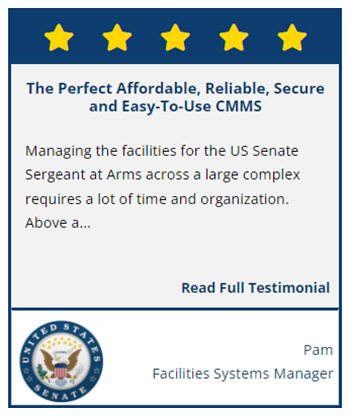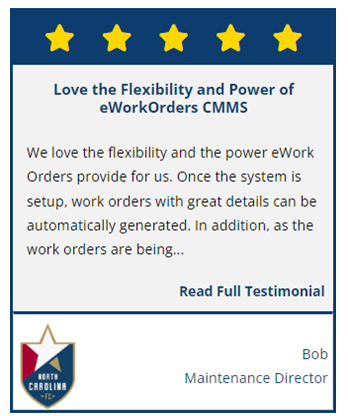 Both the United States Environmental Protection Agency (EPA) and the Centers for Disease Control and Prevention (CDC) emphasize the significance of a healthy physical environment for enhancing learning experiences. This encompasses various factors such as the school’s physical structure, surroundings, exposure to biological and chemical agents, and elements like temperature, sound, and lighting.
Both the United States Environmental Protection Agency (EPA) and the Centers for Disease Control and Prevention (CDC) emphasize the significance of a healthy physical environment for enhancing learning experiences. This encompasses various factors such as the school’s physical structure, surroundings, exposure to biological and chemical agents, and elements like temperature, sound, and lighting.
The correlation between building conditions and student outcomes is evident, underscoring the importance of maintaining indoor air quality, comfortable classrooms, and other planned upkeep activities. Improving building conditions has been shown to directly impact academic performance, potentially leading to enhanced test scores and a more conducive learning environment.
What is the Meaning Of School Maintenance?
School maintenance encompasses a range of tasks essential for upkeeping equipment and infrastructure on school premises, resembling overall campus management and maintenance. It aims to establish safe, conducive conditions for students, teachers, parents, and guardians, with a focus on providing an appropriate and optimal physical environment for effective learning and teaching.
Crafting an Effective School Maintenance Plan
To establish a comprehensive maintenance plan, take stock of equipment, buildings, and grounds. This inventory forms the basis for determining necessary care.
Facility Management
Ensuring the general upkeep of the school’s infrastructure and surroundings is paramount. The condition of facilities directly influences daily school operations. From maintaining HVAC systems for comfortable classrooms to repairing outdoor walkways, each aspect contributes to the overall learning environment.
Effective school facility management should cover a diverse range of aspects, including:
Infrastructure Maintenance
Regular upkeep of the school building and grounds
Monitoring and maintaining electrical systems
Ensuring energy efficiency through sustainable practices
Managing heating, ventilation, and air conditioning (HVAC) systems
Plumbing and water supply maintenance
Roofing and structural integrity oversight
Ensuring an organized and well-stocked inventory
Tracking and managing equipment and supplies
Implementing preventive maintenance measures
Conducting timely replacements and repairs
Developing and maintaining a comprehensive inventory system
Ensuring the availability of essential supplies for daily operations
Regularly updating inventory records to track consumption and restocking needs
Setting and adhering to par levels for various items
Establishing efficient procurement processes to prevent shortages
Implementing technology solutions for streamlined inventory tracking
Categorizing inventory based on urgency and frequency of use
Regularly conducting audits to identify discrepancies and minimize waste
Collaborating with vendors to optimize supply chain management
Training staff on proper inventory handling and reporting procedures
Health and Safety Compliance
Adhering to federal and state regulations for water quality and air ventilation
Preventing exposure to biological or chemical agents
Ensuring proper waste disposal procedures
Implementing safety measures to protect against potential hazards
Security and Access Control
Developing and maintaining security protocols
Installing and managing access control systems
Regular testing and monitoring of security measures
Training staff and students on security procedures
Emergency Preparedness
Creating and practicing emergency plans and procedures
Regularly checking emergency equipment and supplies
Ensuring adequate lighting and signage for emergency exits
Providing clear and accessible emergency protocols for staff and students
Sustainability and Environmental Considerations
Implementing eco-friendly practices and initiatives
Monitoring and reducing energy consumption
Incorporating renewable energy sources
Promoting waste reduction and recycling programs
Technology Integration
Managing and maintaining classroom technology
Ensuring the functionality of audiovisual equipment
Providing technical support for teachers and students
Upgrading and updating technology infrastructure as needed
Collaborative Partnerships
Establishing relationships with external vendors and contractors
Coordinating with school administrators, teachers, and staff
Communicating maintenance plans and progress to stakeholders
Key Players in School Maintenance
The school maintenance team consists of dedicated professionals who play vital roles in ensuring the smooth operation and upkeep of educational facilities. Their responsibilities encompass a wide range of tasks, from routine maintenance to emergency repairs. Let’s take a closer look at the key members of the school maintenance team and their specific roles:
Facility Directors/Managers: These individuals oversee the overall maintenance strategy. They make crucial decisions, manage budgets, and ensure the effective allocation of resources. Facility directors/managers often coordinate with external contractors and vendors.
Maintenance Supervisors: Responsible for supervising maintenance staff, these individuals assign tasks, monitor progress, and ensure that maintenance operations run efficiently. They act as a bridge between facility directors and maintenance technicians.
Maintenance Technicians: The backbone of the team, maintenance technicians perform hands-on tasks. They address work orders, conduct preventive maintenance, repair equipment, and maintain the physical infrastructure of the school.
HVAC Technicians: Specializing in heating, ventilation, and air conditioning systems, HVAC technicians ensure optimal indoor climate control. They perform maintenance, repairs, and installations to provide a comfortable learning environment.
Electricians: Skilled electricians handle electrical maintenance, troubleshoot issues, and ensure proper lighting and electrical systems throughout the campus.
Plumbers: Plumbers maintain water supply systems, fixtures, and drainage systems. They address plumbing issues to maintain proper sanitation and functionality.
Custodial Staff: Responsible for cleanliness and hygiene, custodial staff perform routine cleaning, waste disposal, and maintenance of common areas.
Security Personnel: In charge of safety, security personnel manage access control, surveillance systems, and emergency protocols to ensure a secure environment for students and staff.
Emergency Response Team: Trained to handle crisis situations, this team executes emergency plans, conducts drills, and ensures the safety of all occupants during unforeseen events.
Technology Support: These experts manage and maintain classroom technology, audiovisual equipment, and digital systems to support the integration of technology in education.
Administrators and Staff: While not part of the maintenance team per se, administrators and staff play a role in reporting maintenance issues, assisting with coordination, and supporting the overall maintenance efforts.
Types of School Maintenance Tasks
In addition to the inherent nature of maintenance tasks, these tasks can also arise under different circumstances. Facility managers should be prepared for an array of planned and reactive maintenance tasks in any school setting, as detailed below:
Emergency Maintenance Tasks: These tasks demand immediate attention in response to sudden breakdowns or failures. For instance, a malfunctioning boiler on a cold winter day necessitates urgent intervention.
Preventive Maintenance Tasks: Carried out at regular intervals, preventive maintenance tasks are designed to uphold the integrity of facilities and assets and avert potential failures. A classic example is replacing air conditioning filters every three months.
Predictive Maintenance: This proactive approach involves analyzing equipment performance, usage patterns, and age to forecast estimated lifespans and pinpoint potential maintenance requirements. Predictive maintenance software is often employed to conduct this analysis and notify team members when services are needed to prevent breakdowns or initiate replacements.
By gaining insight into these diverse maintenance categories, you can better anticipate the future needs of your school. Striving to shift away from excessive emergency maintenance and prioritizing preventive and predictive maintenance whenever feasible is a prudent approach.
Transforming School Maintenance with Cutting-Edge Facilities Software (CMMS)
The integration of cutting-edge Facilities Software (CMMS) marks a transformative leap in the domain of school maintenance. This innovative solution revolutionizes the management of upkeep, streamlining operations, empowering staff, and fostering optimal learning environments. By seamlessly incorporating advanced technology, educational institutions can unlock unprecedented efficiency, elevate maintenance quality, and propel their commitment to excellence.
Final Thoughts
In the grand tapestry of education, the importance of school maintenance is a thread woven intricately into the fabric of student success. As we navigate the ever-evolving landscape of learning environments, it becomes evident that a well-maintained and organized school is not merely a physical space, but a cornerstone for fostering growth, inspiration, and achievement. From the meticulous management of facilities and equipment to the swift response to maintenance needs, every effort contributes to the creation of a safe, comfortable, and conducive atmosphere for both educators and learners. The impact of school maintenance extends beyond the physical realm, transcending into the realm of possibilities and opportunities for students to thrive. By embracing cutting-edge Facilities Software (CMMS) and elevating maintenance practices, educational institutions stand poised to unlock the true potential of their learning spaces, ensuring that each student’s journey is marked by excellence and empowerment.
Frequently Asked Questions
Why is maintenance important in education?
Maintenance contributes to the safety of the school environment, ensuring a tidy and well-organized facility for both students and teachers in their daily routines. Routine maintenance operates discreetly to avert immediate concerns, while planned maintenance addresses significant or prolonged challenges that the school may encounter.
What is the meaning of school maintenance?
School maintenance refers to all the activities typically required for the general upkeep of equipment and infrastructure on school grounds. In that sense, it is very similar to campus management and maintenance.
Why is facility management important in schools?
By implementing processes that help staff prioritize where maintenance needs to be performed, money can be saved, and how spaces can be used, schools are able to utilize their resources to their full potential.
What is the meaning of preventative maintenance?
Preventive maintenance is the act of performing regularly scheduled maintenance activities to help prevent unexpected failures in the future. Put simply, it’s about fixing things before they break.
Other Resources
Maintenance Terms & Definitions Glossary
School Maintenance – Reopening & Preparing a Safe Environment






